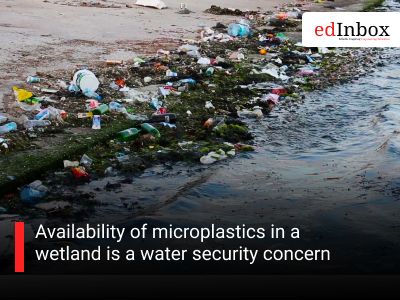Presence of microplastics in the Bhoj wetland, which is a Ramsar site and the major source of drinking water of Bhopal, is a water security concern.
During the research, Surya Singh and co-workers at the Indian Council of Medical Research–National Institute for Research in Environmental Health (ICMR–NIREH), Bhopal, obtained surface water samples. They tested them to look for plastic pieces of sizes larger than roughly 300 micrometres using the Attenuated Total Reflectance–Fourier transform infrared spectroscopy (ATR–FTIR) technique. They detected levels of 2.4 pieces per litre in the upper lake and 6.6 pieces per litre in the lower lake.
To put that into perspective, the data indicates that the microplastic concentrations in Bhoj wetland are identical to or even greater than the most polluted sections of the Ganga river, where they have been between approximately 100 and more than 1,000 pieces per cubic metre or per 1,000 litres in certain areas. As a comparison, European fresh water lakes like Balaton lake have very low counts, usually below 10 particles per cubic metre or 1,000 litres, further indicating that the pollution in the Bhoj wetland is far higher than European systems in general and compares with India's worst-affected waters.
Singh warned that the numbers were most likely lower than the actual contamination level because the detection method, ATR–FTIR spectroscopy, has a detection limit of around 300 micrometres. According to her, if they employed more sophisticated machinery like Pyr GC-MS, µFTIR, or µRaman spectroscopy, they would have been able to detect higher concentrations, and the result would most likely display increased concentrations of microplastics. The research was released in February this year in the journal AQUA — Water Infrastructure, Ecosystems and Society.
Availability of microplastics in a wetland is a water security concern
Typography
- Smaller Small Medium Big Bigger
- Default Helvetica Segoe Georgia Times
- Reading Mode





